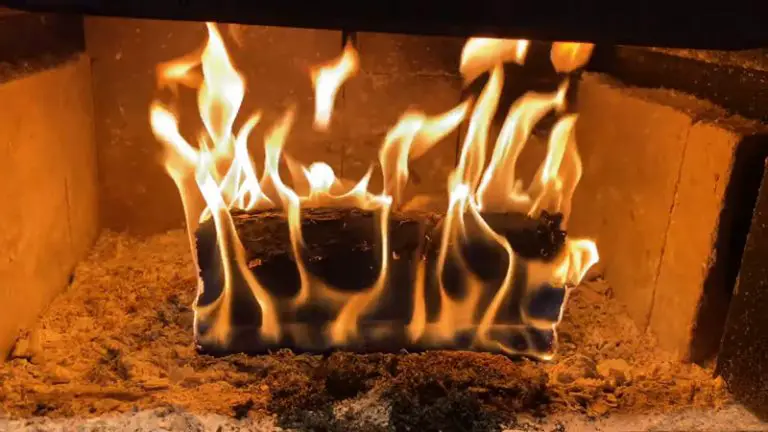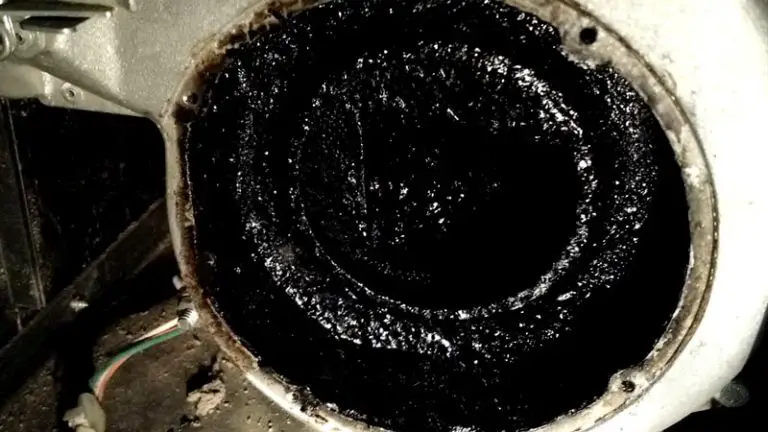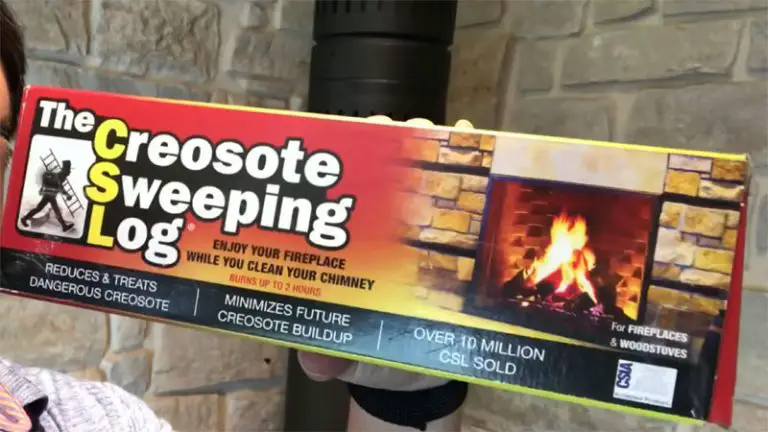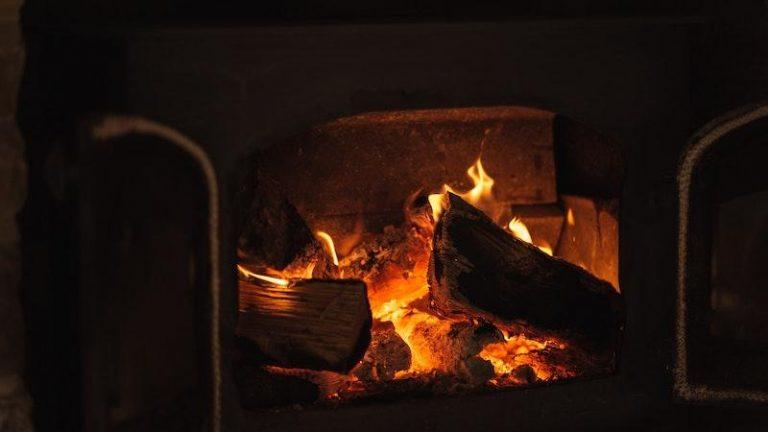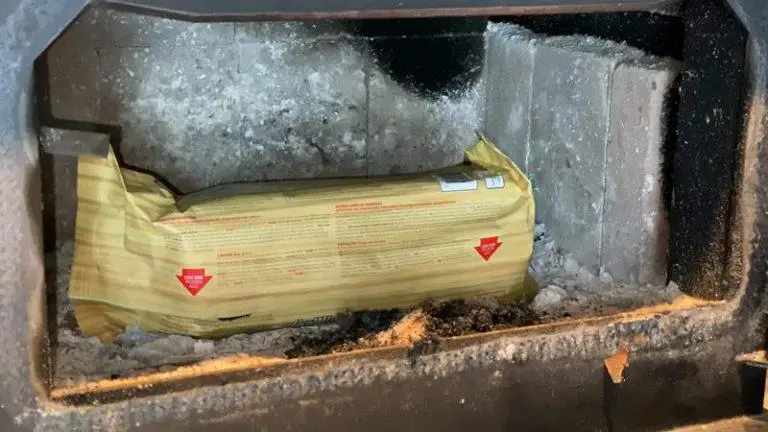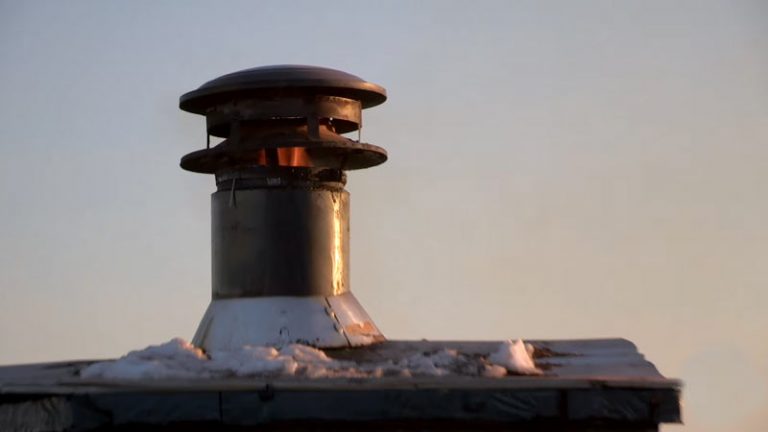How Fast Does Creosote Build Up

Keep your fireplace and stove clean to avoid causing Creosote deposits. Burn wood in a controlled manner to prevent it from becoming too hot or smoky. Don’t burn artificial packaged logs as these may cause fires, too.
Let the wood get low in moisture before burning it for best results. Make sure you know how to correctly use firewood so that you don’t end up with unwanted creosote build-up.
How Fast Does Creosote Build Up?
Burning logs in your fireplace is a tradition for many people. Make sure to use clean, dry wood when burning your fire and avoid using artificial packaged logs.
If you notice any creosote deposits on the walls or ceiling of your fireplace, it’s time to get rid of the wood and start over again. Keep your stovetop clean so that ashes don’t accumulate and create a dangerous fire hazard.
Finally, let your fires burn low before leaving them unattended to prevent damage from flare-ups
Burn Hot Fires
Creosote is a by-product of burning wood and can accumulate quickly in the firepot or in open flames. If you’re noticing an increase in creosote build-up, it’s time to extinguish the fire and start over.
By reading your stove manufacturer’s guidelines, you’ll be able to reduce the amount of creosote produced during use. Use caution when starting a new campfire – follow all instructions carefully so as not to cause any damage or accidents.
Creosote should be cleaned up with soap and water before putting out the old fire for good.
Don’t Burn Artificial Packaged Logs
Creosote builds up very quickly if you burn artificial logs in your fireplace. Always read the manufacturer’s instructions before starting a fire, and never leave burning logs unattended.
If you have an open flame grill or smoker, use untreated wood to cook your food instead of using artificial logs. Make sure that any kindling used is also untreated – this includes twigs from trees and branches left on the ground after being cut down yourself or picking them up at a yard sale or flea market.
If creosote build-up becomes too severe, call for professional help – it may be time to replace your chimney liner.
Dry The Wood
Creosote builds up very quickly when the wood is left in moist conditions, so it is important to let the wood get low in moisture before burning it. It’s also a good idea to use a chimney starter if you’re starting a new fire or are adding fresh coals every day.
If your home uses natural gas, be sure to follow all safety guidelines when using creosote-treated lumber indoors. If you’re going to burn treated lumber outdoors, make sure that there isn’t any wind coming into contact with the flames and that adequate ventilation is available for the smoke and fumes generated by burning treated lumber.
Creosote Deposits Form If You Burn Wood Incorrectly
Creosote builds up quickly if you burn wood incorrectly, as it’s a byproduct of the fire. If you detect excessive creosote deposits in your fireplace or wood-burning stove, take appropriate measures to address the issue before it becomes more serious.
Cleaning and maintaining your fireplace is important to preventing problems with creosote buildup; proper care will help reduce any harmful effects on indoor air quality and ensure years of use for your appliance. Make sure that all fires are properly extinguished before leaving the room so as not to leave any embers that could reignite should there be an emergency evacuation later on in the night.
Properly storing unfinished or unused lumber can also minimize potential damage from creosote build-up.
Keep Your Fireplace And Stove Clean
Creosote is a by-product of wood combustion and can build up quickly in the fireplace or stove. Regular cleaning will help to eliminate this odor and prevent any damage from occurring.
You’ll need warm soapy water, a bucket, some rags, and elbow grease to get the job done effectively. Be sure to remove all debris before putting your fire back in for the season. Follow these tips every time you use your fireplace or stove: clean it as soon as possible after using it, open all doors and windows when unattended, and keep an extinguisher close by just in case.
Will a hot fire remove creosote?
Creosote is a type of oil that builds up on parts of the engine over time. Hot fires can remove this creosote, but they may also damage other parts of the engine in the process.
If you’re concerned about removing creosote from your engine, talk to a mechanic first. 1. Burning aluminum cans in a hot fire will not remove creosote from the chimney. Creosote is an oily residue that forms on the inside of chimneys as a result of burning wood or coal products.
This residue can accumulate over time and cause problems with your fireplace’s performance. 2. You should never try to clean creosote build-up from your chimney using this method. Instead, you should use a Chimney brush to dislodge any dirt and debris that may be stuck in the creosote.
If you do have a buildup of creosote on the inside of your chimney, it is best to call a professional for help cleaning it up properly. Cleaning techniques such as sweeping or pulling can damage delicate parts within the structure of your chimney, which could lead to future maintenance issues or even loss of heat output from your fireplace altogether.
What does Stage 1 creosote look like?
Creosote is a type of paint that was once used on wood. It’s made up of oil, tar, and other chemicals. When it’s dry, creosote looks like brown dust. If the paint on your car is starting to look old and dry, there’s a good chance it has Creosote stage 1 painted onto it.
This usually happens when the paint isn’t properly sealed or protected from the elements. over time, the sun will attack this unprotected coating, causing it to crack and fall off in large chunks.
You May Be Observing Stage 1 Creosote
Stage 1 creosote is a dangerous form of soot that can build up in your chimney and cause serious problems down the road.
If you see signs of stage 1 creosote, it’s important to act quickly to remove it before it causes any damage. Cleaning services can help reduce your risk of future chimney fires.
Don’t Ignore Signs of a Chimney Fire
Chimneys are one of the most common places for house fires to start, so if you notice any unusual or suspicious behavior from your fireplace, don’t hesitate to call emergency responders immediately.
Ignoring signs could lead to disastrous consequences down the line.
Cleaning Services
Regular cleaning will help prevent Stage 1 creosote from forming and spreading throughout your chimney system, which would then increase your risk of a future firestorm inside your home. Schedule an appointment with one of our experts today.
Where does creosote build-up the most?
Creosote buildup is most common in areas with restricted chimney access- like a basement or attic. Unseasoned wood may be used in a fire, leading to creosote buildup.
A Chimney cooler than normal can cause the build-up as well since more heat sticks around the metal parts of the system longer than it would on an average day/night cycle.
Finally, creosote will accumulate where there is not enough airflow such as under unventilated roofing and in walls near registers and vents.
At what temp does creosote build up?
Creosote is a heavy, black oil that can build up on engine parts over time. This happens when the oil doesn’t evaporate and accumulates on the metal surface.
Creosote can cause corrosion and other damage to your car’s engine.
Creosote formation
Creosote is a carcinogenic by-product of burning oil, gas, wood, or coal and it can build up anywhere along your system where the temperature falls below 250 degrees F. This includes inside your furnace enclosure as well as between your furnace’s flue and chimney.
If you see dark streaks flowing down from your chimney, it’s time to check out for blockages in your system.
Condensed creosote deposits
Between 150 and 250 degrees F, condensed creosote can often be seen as dark streaks that have flowed down outside of the chimney.
These deposits are also very fluid which means they’re easily damaged if there’s an obstruction in their path – like a stuck piece of metal or debris blocking the Chimney’s draft (the flow of air).
Between 150 and 250 degrees F, condensed creosote can often be seen as dark streaks that have flowed down outside of the chimney. These deposits are also very fluid which means they’re easily damaged if there’s an obstruction in their path – like a stuck piece of metal or debris blocking the Chimney’s draft (the flow Of air).
If you see dark streaks flowing down from your chimney, it’s time to check out for blockages In Your system. If You find evidence That blocked gases Are preventing heat From reaching The firebox then repair Or replace any obstructions ASAP.
To Recap
Creosote builds up quickly in a fire, so if you have a fireplace or wood-burning stove, be sure to clean it regularly and prevent creosote build-up. Creosote is also released from old furniture and other wooden objects, so be sure to properly protect your property against fire damage.

